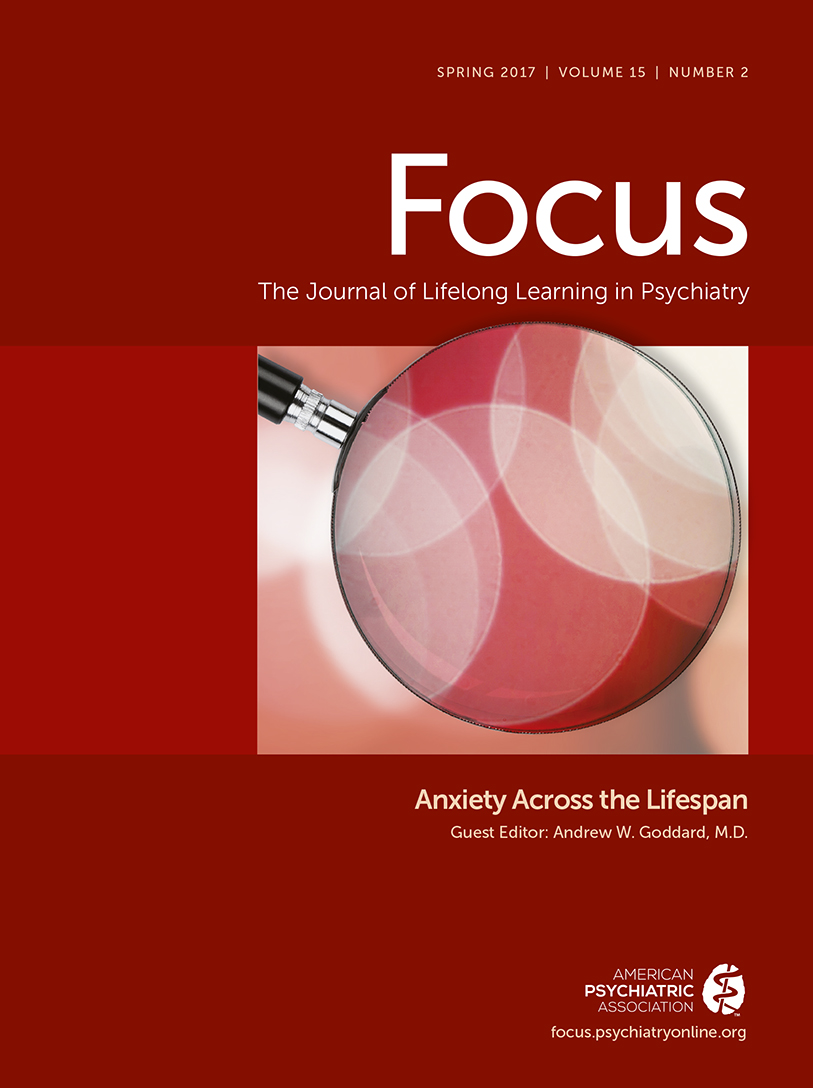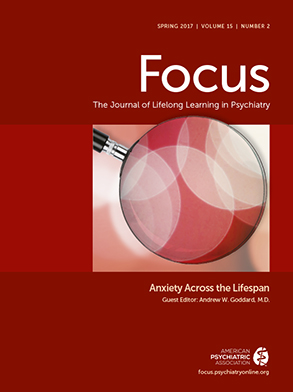Morbid Anxiety: Identification and Treatment
Abstract
Anxiety Phenomenology
DSM-5 Classification and Diagnostic Changes
| DSM-5 Anxiety Disorder | DSM-5/ICD-10 Codes | Core Features/Fears | Additional Comments |
|---|---|---|---|
| Panic disorder | 300.01/F41.0 | Recurrent spontaneous panics and anticipatory fear (>1 month) of future panics | Nocturnal panics strongly suggest diagnosis |
| Generalized anxiety disorder | 300.02/F41.1 | Excessive and uncontrollable worrying | Exaggerated startle response “adds weight” to diagnosis |
| Social anxiety disorder | 300.23/F40.10 | Fear of negative social evaluation | May involve social interactive and performance situations |
| Agoraphobia | 300.22/F40.00 | Fear of being trapped in situations from which escape or receiving help is difficult | Defined as fear and avoidance of at least 2 of 5 agoraphobic situations |
| Separation anxiety disorder | 309.21/F93 | Excessive and inappropriate fear of being separated from a significant attachment figure | In adults, fear persists beyond 6 months |
| Specific phobia | 300.29 | Fear and avoidance of a discrete situation or object | Five types (e.g., animal, natural environment, blood-injury, situational, other) |
| Other specified anxiety disorder | 300.09 | Does not meet full criteria for an anxiety disorder |
Diagnostic and Differential Diagnostic Issues
Approaches to Treatment
Treatment Planning
Evidence-Based Pharmacotherapies
Panic disorder.
GAD.
Social anxiety disorder.
Personalized pharmacotherapy.
Evidence-Based Psychotherapies
Panic disorder.
GAD.
Social anxiety disorder.
Is Combination Treatment Really Better?
Complementary and Alternative Treatment Interventions
Neuromodulation
Summary and Conclusions
References
Information & Authors
Information
Published In
History
Keywords
Authors
Funding Information
Metrics & Citations
Metrics
Citations
Export Citations
If you have the appropriate software installed, you can download article citation data to the citation manager of your choice. Simply select your manager software from the list below and click Download.
For more information or tips please see 'Downloading to a citation manager' in the Help menu.
View Options
View options
PDF/EPUB
View PDF/EPUBLogin options
Already a subscriber? Access your subscription through your login credentials or your institution for full access to this article.
Personal login Institutional Login Open Athens loginNot a subscriber?
PsychiatryOnline subscription options offer access to the DSM-5-TR® library, books, journals, CME, and patient resources. This all-in-one virtual library provides psychiatrists and mental health professionals with key resources for diagnosis, treatment, research, and professional development.
Need more help? PsychiatryOnline Customer Service may be reached by emailing [email protected] or by calling 800-368-5777 (in the U.S.) or 703-907-7322 (outside the U.S.).

